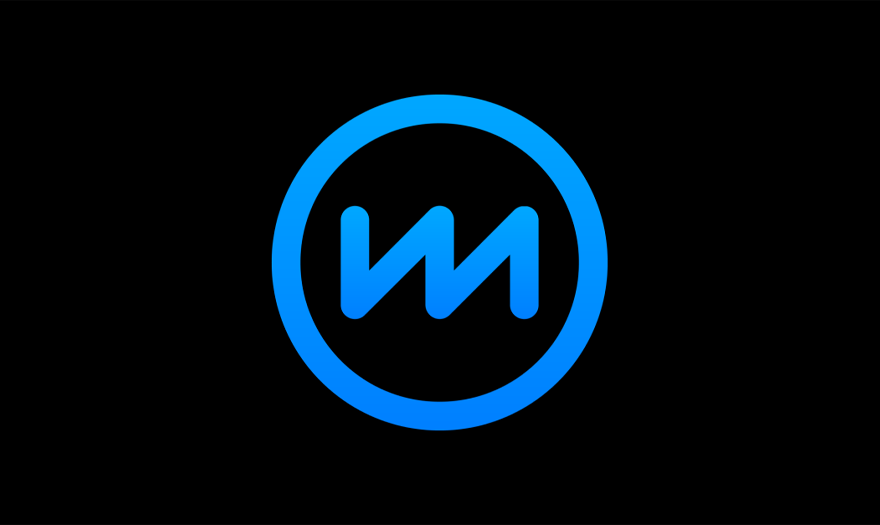
You’ve probably worked with an investment advisor to maximize the growth of your retirement portfolio, even though the banks offer you all the tools for you to do it yourself.
You probably have an accountant to manage your books and taxes, even though tools like QuickBooks and SimpleTax allow you to do it yourself.
You’ve also likely used a realtor to help you buy/sell real estate, even though tools like Purple Bricks allow you to do it yourself.
So the question is, why do the vast majority of businesses try to manage their Google Ads themselves?
Because that’s how Google makes 139 Billion dollars a year. They want to make you feel as confident as possible, DOING IT YOURSELF.
But the truth is, you probably aren’t doing / won’t do a good job yourself. As a matter of fact, you’ll likely lose money in the process, then attribute it to the fact that Google Ads don’t work or are a scam.
In the best case scenario, you will run some ads yourself, maybe generating some calls and/or emails. You’ll experience the seat-of-the-pants feeling that it’s working… but, is it???
What’s your ROI? Do the numbers show that the money you’re spending is actually generating profits for you?
In reality, almost nobody managing their own Google Ads is getting enough out of it.
But let’s be clear, Google Ads does work for all viable businesses where people require your services.
In fact, the main digital marketing viability test I run for every prospective client is to walk them through the ROI that Google Ads, paired with a quality website, will produce.
For example: Let’s say your expected cost-per-click price is $2, and your website conversion rate is 5%.
$2 x 5% = $40/lead
If you’re closing 1 in 3 leads, on average, that’s a $120 customer acquisition cost.
If each customer, on average, produces profits of $350, then that’s roughly a 3X ROI.
For more info on this, download a copy of my eBook, Know Your Numbers – Turning Digital Marketing into Profits.
Having done this now 1000’s of times, I know there is a fine line where some businesses turn a profit while others lose money.
So if you’re going to run Google Ads, and you want to do it profitably, you need a campaign that performs in the top 20 percentile or higher.
These are the 16 Things You Need to Consider to Make Your Google Ads A Top Performer:
1. Conversion Tracking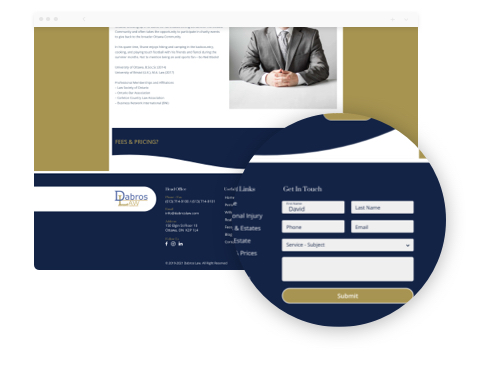
Conversion tracking is the process of tracking every action that produces value to your business; like a phone call, contact form submission, live chat conversation, email subscriber or downloading a piece of content.
When set up in conjunction with your ads, you can see exactly which keyword triggered which ad, as well as which campaigns are leading to specific conversions on a page on your site.
As you can imagine, this is an insanely powerful metric to have when looking to ramp up the elements of an ad campaign that’s working, while trimming back on what’s not.
In addition to this, conversion tracking is the main element that you’ll need in place to get proper ROI numbers, so you can relate how much you’re spending vs. how much your campaign is generating.
Shockingly enough, the vast majority of campaigns do not have conversion tracking set up properly, because it’s pretty difficult to implement accurately and generally requires the assistance of a web developer.
2. Choosing an Ad Strategy
Depending on your goals, you’ll want to adopt an appropriate ad strategy. The 3 most common ad strategies are:
i. Brand Awareness: When you’re looking to maximize impressions, a brand awareness campaign might be a good strategy for you.
An example would be Coca-Cola launching their new Coke Zero product line. Nobody will be buying this product online, and they aren’t expecting people to jump up and go buy it right away, but they definitely want to ensure people know Coke Zero exists so that it’s in the back of your mind the next time you go grocery shopping.
While this may not be my go-to strategy, brand awareness is useful when trying to reach as many people as possible for a set budget.
ii. The Maximizer: The Maximizer is designed to maximize the number of clicks for a set budget. This means minimizing cost-per-click and trying to drive as much traffic to your site as possible.
While this might initially seem like the ideal strategy, it doesn’t necessarily translate into money in your pocket if the intent of these clicks isn’t to convert. A lower cost-per-click often means lower positioning in the ads, where intent to buy is often minimal.
This strategy may however work if your goal is a really simple conversion or perhaps to tag visitors with a “cookie” so you can retarget them to convert with other ads later. Even if the Maximizer strategy does convert well, it will always be limited by a lower budget, and thus you won’t maximize your potential for total profits.
iii. The Profiteer: The profiteer is based around generating as many conversions as possible for a given conversion cost target. This type of campaign focuses less on how much is spent, instead scaling up ad budgets in a controlled manner so that the focus is on how much profit is generated.
An example would be a target conversion price of $50 for a dentist. The ad campaign is built to target as many possible high intent searches, and then spend is scaled up as much as possible to maximize the number of new patient requests until the conversion costs exceeds the target. That’s the “sweet spot” for maximum profitability.
Take this strategy one step further and incorporate target cost-per-acquisition bidding strategies, and you can further leverage Google’s AI to bid more when a user appears to have higher intent to convert and less when user intent appears to be lower. (see part 12 for more info)
3. Keyword Targeting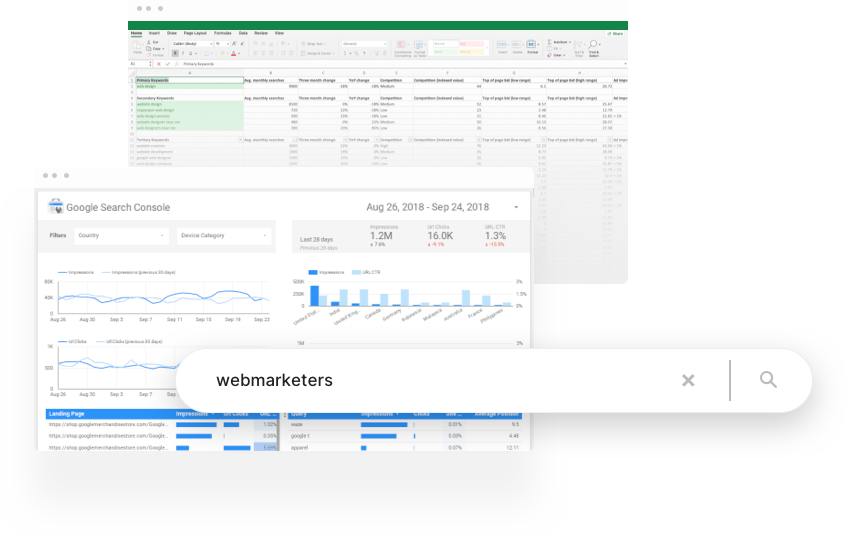
Choosing a handful of broad match keywords with high search volume is most people’s go to for getting their ads to show up in Google. The reality is, the less time you put into keyword research, the more you’ll pay for each click.
It is important to conduct thorough keyword research prior to launching a campaign, properly aligning the right keywords with the right ads and the best landing page.
Knowing the ins and outs and differences between using broad match keywords vs. exact match keywords vs. phrase match (and when to use keyword modifiers) helps increase performance and reduce waste. If the mention of those keywords types has you scratching your head, then that might be a sign… (sigh)
4. Negative Keywords
On the subject of keywords, I’ll also explain negative keywords. These are the keywords that you DO NOT want to trigger your ads, most likely due to lack of relevance or user intent.
An experienced Google Ads manager should know what negative keywords to use out of the gate, as well as how to review all search terms that trigger ads on an ongoing basis to ensure you’re not wasting money on useless clicks.
5. Ad Copy and Extensions
Users used to be conditioned to skipping the ads section of Google search results, mostly due to irrelevant ads. Nowadays, Google has greatly increased its expectations from advertisers such that ads must be of good quality, or else they won’t be displayed. The result is that more and more users naturally click ads when those ads meet the needs of their search.
Increasing ad quality means advertisers must write better ad copy, use dynamic keyword insertion and/or include ad extensions to alternate pages on your website. Great ad copy means good click-through-rates (CTRs). A Google Ad campaign must meet Google’s expected click through rates and then maintain an average-or-better click through rate to continue to be shown.
Do this really well, and you’ll see better ad placement and lower click prices. Do this poorly and you’ll notice your ad stops being shown as often – until eventually it becomes a waste of time and money to continue running.
6. Getting into Google My Business (GMB) Listings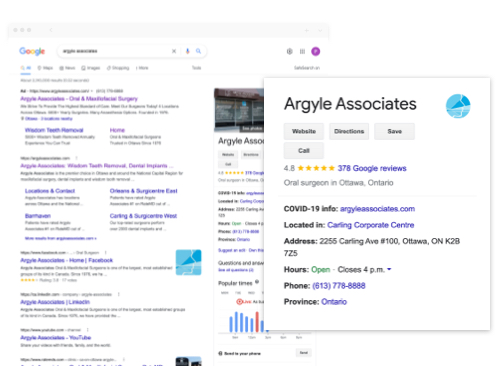
For any local, mobile or searches including “near me,” the maps are a dominant part of the search results. In fact, on mobile, Google assumes you’re looking for something close-by and shows far more GMB listings in the search results.
Therefore, if you’re a business that lacks the GMB presence to rank well naturally, you’ll want to include sponsored GMB ads in your ad strategy so you don’t miss out on a big portion of the market.
7. Brand Defense and Competitor Targeting
If you or any of your direct competitors have a well-known brand, then these strategies are a must. We typically recommend a budget of 15-20% of your overall campaign be allotted to brand defense.
Brand defense is the process of bidding on your own businesses name in order to protect other businesses from running ads that show up before your organic search listing and thus stealing your traffic.
However, you must be careful with brand defense campaigns. Sometimes agencies will invest the majority of your budget into these campaigns to boost metrics and demonstrate really low conversion prices. This is a shady tactic, however; it might make the agency look good on reports, but it doesn’t help you reach new audiences searching non-branded keywords.
Competitor targeting is doing exactly the opposite. Bidding on your competitor’s name allows you to introduce your company as a possible alternative when people are searching for your competitor.
A really good example of this is what all the competitors of Casper (the foam mattress company) have done to enter the market. They all try to piggy-back off Casper’s brand and use ads saying something like, “Don’t buy a Casper until you try an Endy.”
This allows Endy to intersect high value searches, where there’s intent to buy, and try and steal the sale with an effective landing page that builds off their ad’s headline.
8. Landing Page Optimization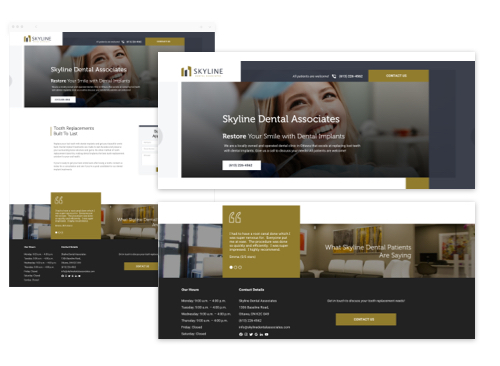
Landing page optimization is in fact the MOST IMPORTANT way a professional can help. When you’re running Google Ads, yes there are ways to run a better campaign than others, but it still is an auction-based bidding system, therefore the price you pay per click will inevitably be within the same magnitude as your competitors.
What you do with that click after paying for it is a completely different story!
Landing page optimization is the process of making sure your landing page(s) have exactly the right information and structure required to get high conversion rates. High conversion rates mean much lower lead costs.
I’ve seen customers gain a 3-4X advantage over competitors just by doing this one thing well, thus it trumps all optimizations on the ads side of things combined.
Check out our Lead Page offering if this seems like an interesting opportunity for you!
9. Ad Delivery Insights
The vast majority of ad campaigns are set to run on all devices, all the time, 7 days a week, 24 hours a day. This isn’t really the most efficient way to do things.
Google Ads allows you to run your ads on a schedule, choosing between desktop and mobile searches, target specific ages, genders, devices and even target a specific ad position.
Determining what will work best for your business requires a deep dive into your existing ad metrics, and then making adjustments to your campaign to support your findings.
We’ve seen lead prices improved by over 50% just by targeting users only on desktop computers, for example. Even though the clicks were a bit more expensive, we discovered that they converted at 2-3X the rate and were thus worth it.
Generating advanced insights will require conversion tracking setup. (revisit part 1!)
10. Display Campaigns and Remarketing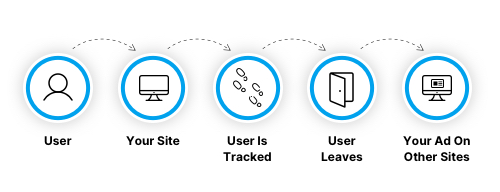
Display campaigns are the visual ads you see in banners throughout various websites all across the internet. Remarketing is the technique of planting a cookie on the browsers of users that have recently visited your website so you can follow them around with ads reinforcing your brand and/or the product or service they were already looking at.
These ads might seem annoying as a user, but they work!
The best part is that if you’re willing to pay for Google search ads in the first place, why wouldn’t you spend the money to bring a visitor back to your site again?! If the first click cost you $2 for example, typically a remarketing click will only be 15-20 cents!
11. Improved Quality Scores
Ad quality scores are a metric used to gauge how well the keywords you’re targeting align with the ads you’re showing and the landing page you’re sending visitors to.
Google wants a seamless user experience for users of its search engine. That’s why Google favours advertisers that demonstrate a quality experience by creating ad campaigns with high-quality scores.
Google uses ad quality scores to determine the positioning of ads in the search results.
Good quality scores translate into lower click prices. Meanwhile, poor quality scores lead to high prices and wasted money.
12. Running Target CPA Experiments
Target CPA stands for target “cost-per-acquisition.” This essentially means that you provide Google with a target conversion price. Google will automatically bid more to show your ad when there’s a Google user demonstrating high intent to convert while bidding less if the user is showing lower intent.
How does Google know which users have higher or lower intent to convert?
Well, Google keeps A LOT of data on users and website visitors in general. Based on a user’s recent activity, Google can use machine learning to predict a user’s intent.
This balancing act allows Google to spend your budget in a more optimized manner that generally increases conversions.
Sometimes these “experiments” take longer to work than you’d like, and sometimes they don’t work at all – that’s exactly why we call them experiments. It’s because they’re best run in parallel to an existing campaign where the conversion prices can be directly compared side-by-side to see which works best.
13. Trend Spotting
This can most easily be explained based on the benefits of managing a lot of Google Ad campaigns and comparing and contrasting their relative performance.
We pick up on trends related to algorithm changes a lot quicker than most business owners, because we have a lot of data.
When we notice what works in one industry, we try to implement similar concepts for our other clients.
We’re also able to take existing campaigns for other clients in a similar industry and apply proven strategies for new clients.
All of these trend spotting benefits provide the opportunity for you to come out of the gate with a high-performing ad campaign right away, as well as stay up to date with changes and new opportunities more quickly.
14. Clear Reporting & Accountability
As a company that manages a lot of campaigns, we require access to the latest and greatest tools for reporting and analysis purposes. A lot of ad software is designed only for Agencies, and the price points suitably follow.
Thus working with an expert ad manager often means being able to tap into reporting tools you wouldn’t otherwise have, making it easier for you to understand what’s working and what’s not.
Receiving a report from your ad account manager that you can easily understand is very important, as it lets you hold the agency accountable to the agreed-upon performance goals.
15. Scaling Opportunities
As mentioned in part 2, section iii when discussing the Profiteer strategy, scaling a campaign to maximum profitability is an ideal goal to have for your ad campaign.
Unless your business is not set up to grow and can’t handle more leads, you’ll always be looking for ways to keep spending money that you know makes you more money.
If your ad manager knows this, they’ll continually look for more keywords to incorporate into your campaign, which then allows you to reach a broader market. This practice combined with using Google’s “bid simulator” will give you a really good idea of how your campaign will perform if your budget is increased.
Generally, the more of the market you want to capture, the more your click prices will go up in order to have your ads shown in higher positions and higher frequency. The bid simulator can help you determine the “sweet spot” for profitability before increasing the budget for a given campaign.
16. Save Time and Peace of Mind
This one is pretty self-explanatory!
Kudos to you if you took the initiative to set up your own ad campaign, but let’s be honest: Your time is best spent running your company, not dabbling in complex advertising campaigns.
It’s the same reason I’d be hiring you (and might one day) if it was your expertise that would make and/or save me money.
Not only will you save time, but the management fees we (or other experienced Google Partners) charge will be more than justified based on the money saved and how much more we can make you.
If you’re looking to hire a professional to help optimize your Google Ads campaigns, get in touch with our team to get started.
Learn more about our Google Ads management services today!
